How To Find The Right Golf Shoe For Your Game
Finding the right golf shoe is an art, and there are a few key things to look out for...
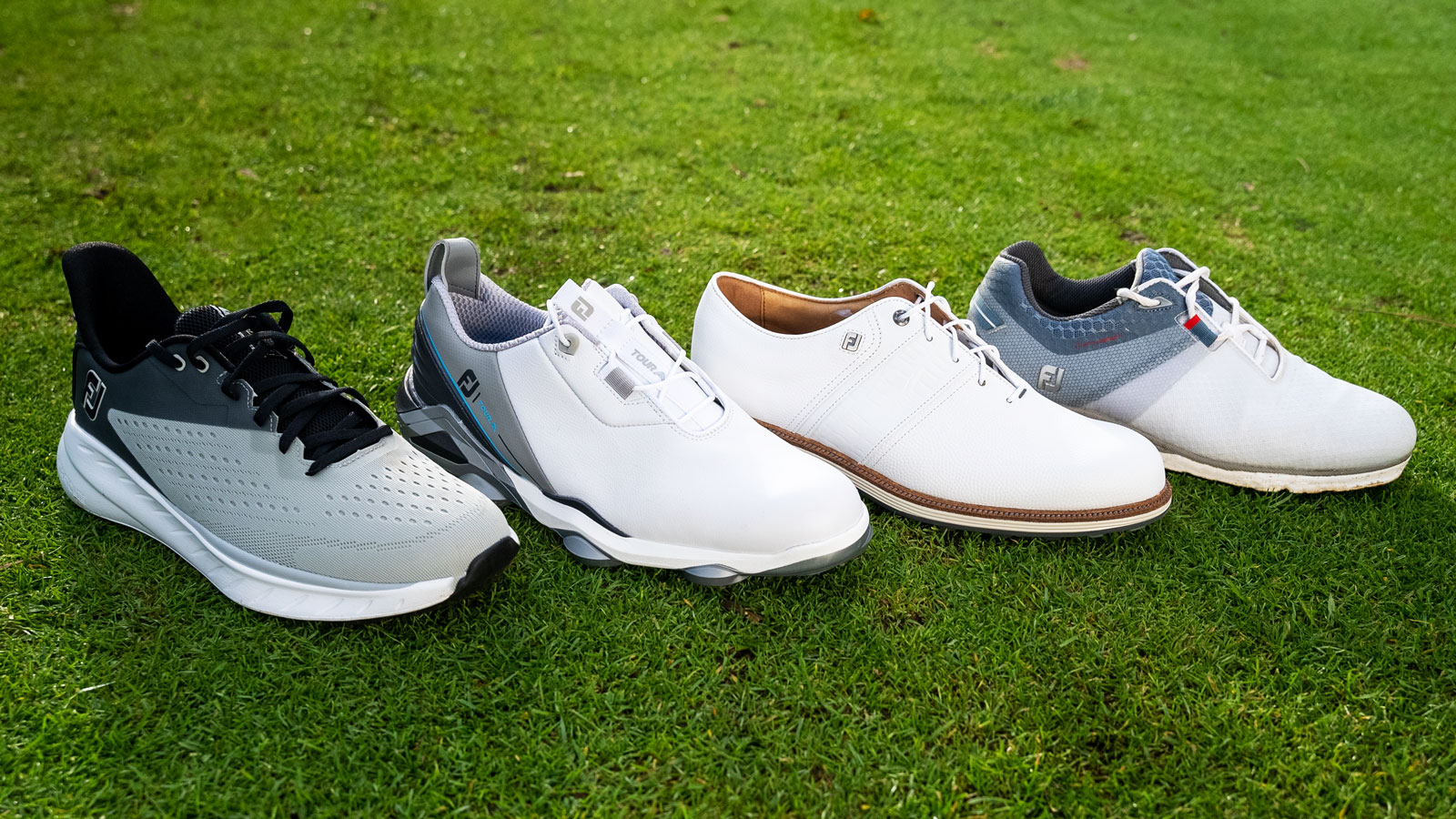

How To Find The Right Golf Shoe For Your Game
From getting the sizing right to choosing the right upper and outsole there is much more to choosing a golf shoe than meets the eye. Indeed, there are more benefits to getting the right golf shoe than you might think with sizing, style, and grip being the important factors in marrying the right golf shoe to your foot.
Your feet are your only points of contact with the ground during the golf swing, so having the right build and materials to suit your feet and the conditions you play in is vital to building confidence and comfort underfoot. Research shows golfers take upwards of 13,000 steps during a round of golf, so getting the fit, look, performance, and comfort right are essential to enjoying the walk. Here, we've come up with three key decisions you need to make and how to make them ahead of purchasing your next golf shoe.
WATCH: Dan Parker talks through how to find the right golf shoe for your game.
Sizing
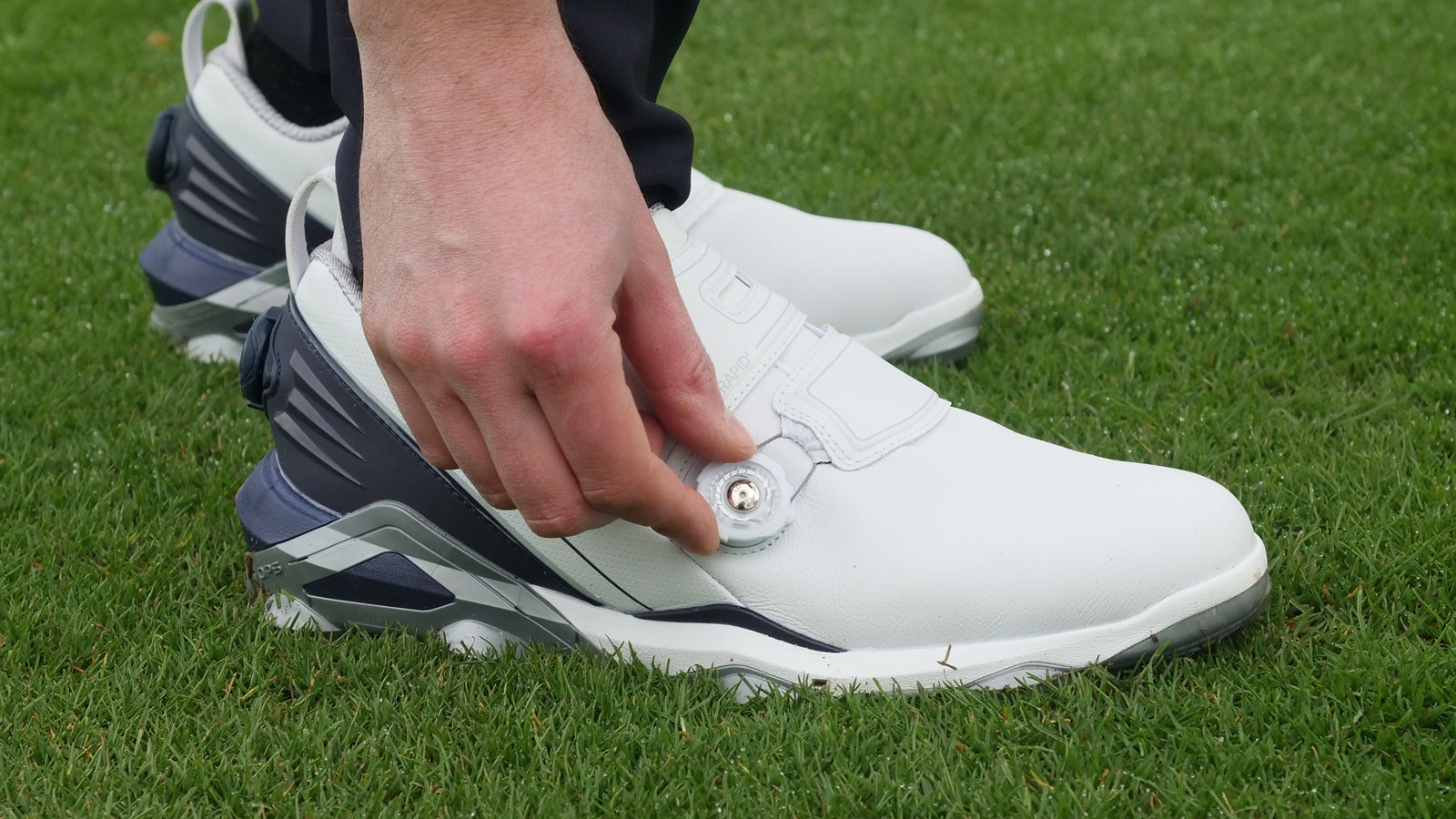
This is the single most important factor when investing in your next pair of golf shoes. Far too many of us are wearing shoes that aren't quite the right fit, and this often leads to pain in the foot as well as the shoe wearing out in places it shouldn't. Golf shoes will last a lot longer if they are the right size and will also mean next to no aches and pains in your feet, especially in key areas like the heel and the toe. Another benefit few of us realize is that the right-fitting shoe will allow you to generate more power in the golf swing - you might even be able to hit the ball a little further with the right-sized shoes on your feet.
Firstly, we'd always recommend getting fitted by a professional. Not many of us have had this done and many of us haven't had our feet professional measured since we were kids. A professional fitting can also look at the width of your foot, something few of us know the actual measurements of. Professioanl fitting aside, there are a few tips and tricks you can do yourself to test whether a shoe is the perfect fit or not. Consider this a checklist for when you're next trying on a pair of shoes to decipher for yourself whether they are the right fit.
Firstly, the gap between the eyelets of the shoes should be about a thumbs width apart when the laces are tightened. This will show you that the shoe is supporting the top of your foot nicely and that it isn't too large or small around the top area. Next up you need to check how close your longest toe is to the end of the shoe. A good rule of thumb here is that your longest toe should be half an inch away from the end of the shoe. This means that it won't rub or catch on the end of the shoes are you're walking, but also that your foot isn't too small either.
Get the Golf Monthly Newsletter
Subscribe to the Golf Monthly newsletter to stay up to date with all the latest tour news, equipment news, reviews, head-to-heads and buyer’s guides from our team of experienced experts.
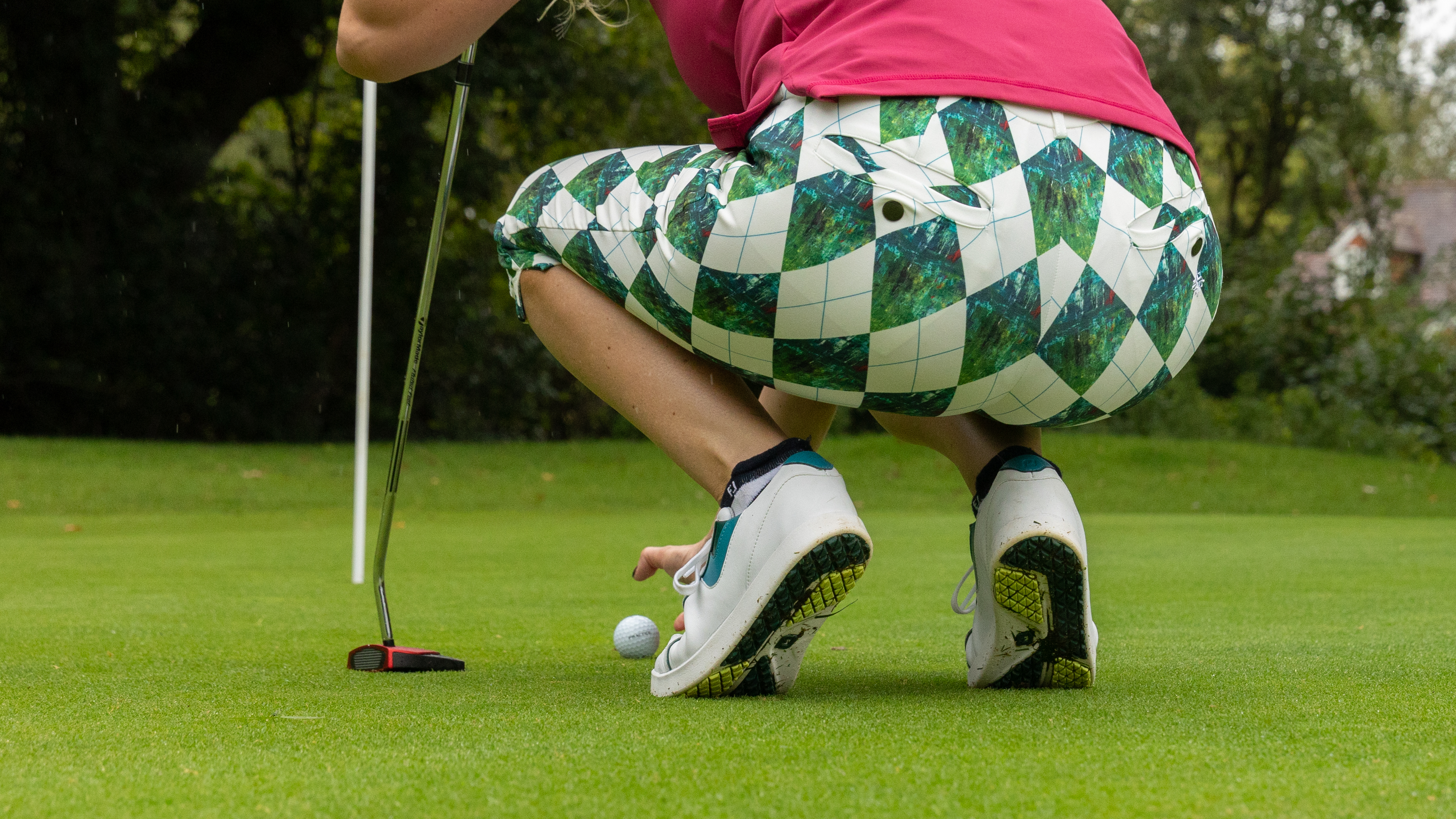
The bend in your forefoot should meet almost exactly with the break in the golf shoe.
Moving on, it's also good practice to check whether the break of the shoe lines up with where your forefoot bends. Your forefoot consists roughly of the front third of your foot and having these two elements of your foot and the shoe line up means that they will bend in unison when you're walking. Importantly, this will stop the shoe from creasing up too much and getting damaged.
A final thing you can do yourself to check for sizing is the 'whoosh' test. This test will help you understand whether your foot fully fills the volume of the shoe. To do this, simply put your foot into the shoe and listen out for a 'whoosh' noise as your heel slides down. If you hear this noise, it means your foot is filling the volume of the shoe properly and displacing all the air in it. If you don't hear this noise or feel that whoosh sensation, it'll either mean your foot is too small for the shoe and not displacing all the air, or that your foot is too big and requires some force to get on. Follow these tips when you are next trying on a new golf shoe and you'll be able to easily work out for yourself whether you've found the right fit.
Materials and Style
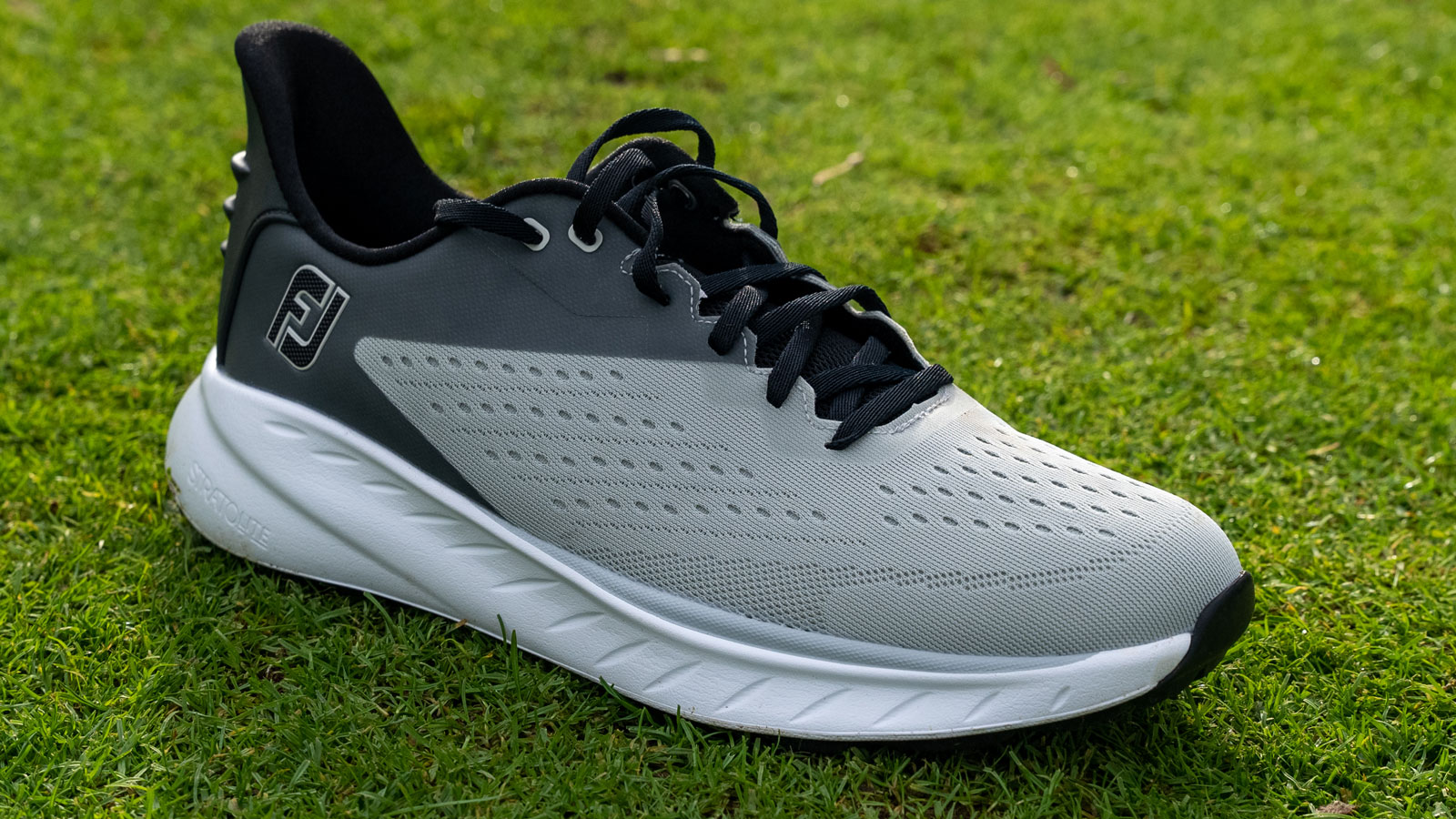
The FootJoy Flex XP 22 utilises a performance mesh upper for a sporty look and lightweight feel. It's still fully waterproof and offers golfers a different style to the traditional leathers.
Choosing the type of material you want from a golf shoe ties in closely with the fit. Fit and feel come hand in hand as some styles of golf shoes will have different fit characteristics from others and there are lots of different materials to choose from. One of the most popular materials used for the uppers of premium golf shoes is leather and the FootJoy Premiere Series Packard is a fine example of that material being utilized. The soft, full-grain leather used in this shoe provides a wonderful feeling around the foot without being heavy and constricting. Leather is also fully waterproof, which is something to consider for finding the right golf shoe for you.
On the other end of the spectrum, there are shoes like the FootJoy Flex XP 22 which use a performance mesh on the upper rather than leather. Not only do uppers like this strike a sportier look, but they are much more lightweight and breathable. Generally, the lighter the shoe the less foot fatigue you'll have after 18 holes. Whilst still fully waterproof, a shoe like this is still much more appropriate for usage in the drier months.
Somewhere in the middle exists shoes like the FootJoy Pro/SL Sport, which uses a mixture of synthetic materials and performance mesh to create a breathable, sporty, and wipe-clean upper suitable for all-year-round use. These are just a few examples of the styles and materials you can go for in a golf shoe. Ultimately, choosing which material is right for you comes down to the conditions you most often play in as well as aesthetic preferences.
Spiked Or Spikeless?
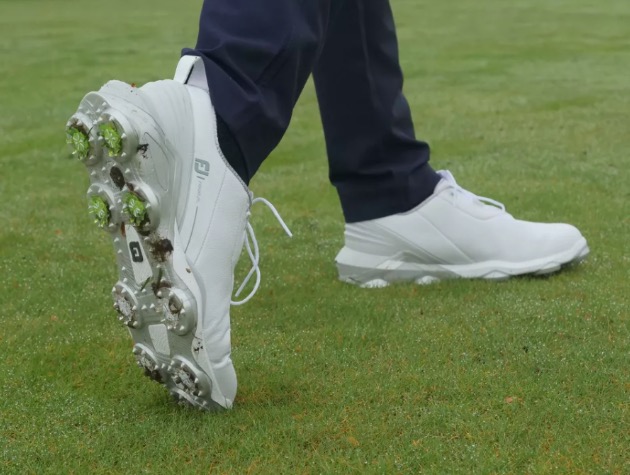
The FootJoy Tour Alpha is one of the most comprehensive spiked golf shoes on the market. Spiked golf shoes are particularly adept in wet conditions.
The final decision to make is what type of outsole to go for. Spiked and spikeless golf shoes each have their own benefits. Spiked golf shoes are ideal for golfers who like to play in all conditions. Ultimately, spiked golf shoes offer the most grip and can create that 'locked-in' sensation that golfers like to feel when they're swinging the golf club. In very dry conditions, however, spiked shoes can feel a little bulkier, and then's when spikeless golf shoes come into their own.
Spikeless shoes still offer a lot of grip in multiple conditions, and the outsoles on the likes of the FootJoy Pro SL 22 and Stratos 22 will surprise you with how much grip they offer in wet conditions. The low-profile nature of the outsole also makes for a very comfortable walk in dry conditions while being easily transferable off the golf course. The spikeless outsole mixed with the causal looks of the FootJoy Contour Jogger is a great example of a modern golf shoe that looks just at home off the golf course as they are on it.
In an ideal world, we would recommend having two pairs of golf shoes in your wardrobe - one spiked and one spikeless. You can then rotate these throughout the year to utilize the benefits of each type of shoe when conditions warrant it. Having a rotation of golf shoes to use throughout the year also means both pairs will last a lot longer.

Dan has been with Golf Monthly team since 2021. He graduated with a Masters degree in International Journalism from the University of Sussex and looks after equipment reviews and buying guides, specializing in golf shoe, golf bag, golf cart and apparel reviews. Dan has now tested and reviewed over 30 pairs of golf shoes and is an expert in the field. A left-handed golfer, his handicap index is currently 6.5 and he plays at Fulford Heath Golf Club in the West Midlands.
Dan's current clubs:
Driver: Ping G440 Max 9°
Fairway: Ping G440 Max 15°, Ping G425 Max 20.5°
Irons: Cobra King Tec Utility, Ping i230 (5-PW)
Wedges: Ping Glide Forged Pro
Putter: TaylorMade Spider Tour X
Ball: Titleist Pro V1
-
 JM Eagle LA Championship Prize Money Payout 2025
JM Eagle LA Championship Prize Money Payout 2025The LPGA Tour heads to California for the JM Eagle LA Championship, where the largest prize money payout of the season so far is on the table
By Mike Hall Published
-
 Corales Puntacana Championship Prize Money Payout 2025
Corales Puntacana Championship Prize Money Payout 2025The PGA Tour’s latest opposite field event features an attractive prize money payout and some former champions in the field
By Mike Hall Published